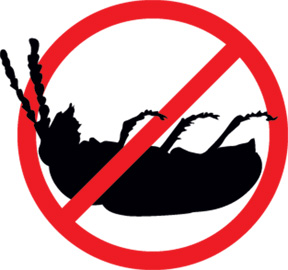 (NewsUSA)
(NewsUSA) – Sponsored News – Homeowners across the country are out enjoying sunshine and fresh air while prepping their homes for the warmer seasons. While home improvements on the honey-do list may seem endless, one important task that shouldn’t be ignored is checking for termite activity.
– Sponsored News – Homeowners across the country are out enjoying sunshine and fresh air while prepping their homes for the warmer seasons. While home improvements on the honey-do list may seem endless, one important task that shouldn’t be ignored is checking for termite activity.
Moisture-damaged homes, regardless of make, model or age, are susceptible to termite infestations. Termites are capable of chewing through wood, flooring and wallpaper undetected. These “silent destroyers” can’t be eradicated with do-it-yourself measures, and cause more than $5 billion in property damage annually, costs not typically covered by homeowners insurance.
How to Identify Termites
Termite-spotting likely occurs in spring as they build new colonies for mating and nourishment. As colonies mature, winged termites appear around lights of windows and doors. After mating, termites create nearby colonies, spreading the infestation and disappearing into structures.
While homeowners may see termites, they can mistake them for flying ants. Termites have distinct body types characterized by straight waists, straight antennae and two sets of wings equal in size. Misidentifying termites could delay treatment and cause structural property damage.
Homeowners should be on the lookout for mud tubes on the base of their house, soft wood that sounds hollow when tapped, darkening or blistering of wood structures, small feces piles resembling sawdust near a termite nest and discarded wings near doors or on windowsills.
Prevention Tips
If your home is currently termite-free, you should still take preventative steps to avoid becoming a termite magnet in the future.
Most importantly, eliminate or reduce moisture in and around the home, which termites need to thrive. Below are things you can do to help prevent infestations in your home:
* Divert water away from the foundation by installing properly functioning downspouts, gutters and splash blocks.
* Reduce humidity in crawl spaces with proper ventilation.
* Trim vines, hedges and other vegetation so they don’t block vents.
* Remove old form boards, grade stakes, tree trunks and roots nearby.
* Maintain 18 inches between soil and any wood portions of your home.
* Store firewood at least 20 feet away from the house and 5 inches off the ground.
* Routinely inspect your home’s foundation for signs of termite damage.
If You Think You Have a Problem
To rid your home of termites, contact a termite pest control specialist to address the infestation and recommend a proper solution. Please visit www.pestworld.org to find your area’s licensed pest professionals.
Homeowners Beware: Are Termites Feasting on Your Home?

Featured Partner
Contributor
Font Size:

